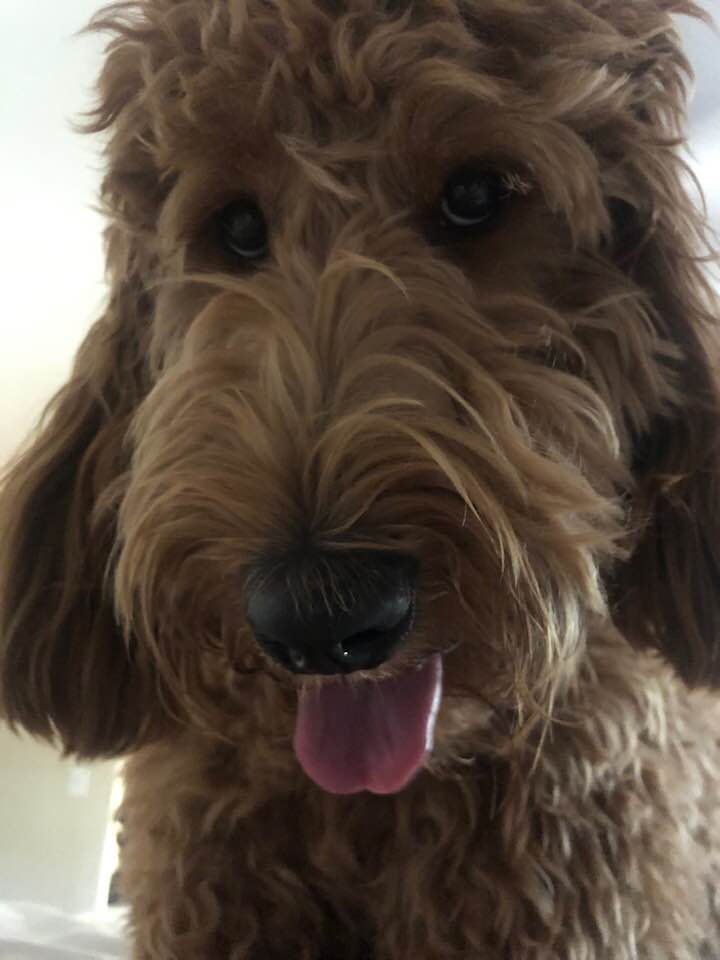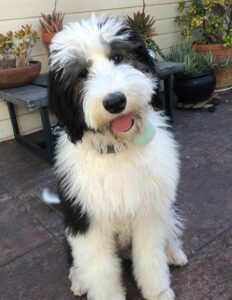godaddy
godaddy
- Post author By admin
- Post date
- No Comments on godaddy
godaddy
test of sitemap
Choosing the perfect coat type and color of a Doodle can be a daunting task. With so many options and colors to choose from, it can be difficult to decide which one is right for you and your family. In this blog post, we will take a look at some of the coat types and colors of Doodles, as well as provide some insight into which type and color may be the best fit for you. We will also discuss the pros and cons of each coat type and color to help you make an informed decision. So, if you're ready to learn more about coat type and color of doodles, let's get started!
Doodles come in a wide variety of coat types and colors, including smooth and shiny, soft and fluffy, wavy and curly, straight and sleek, and coarse and thick. A smooth and shiny coat is a sign of good health in doodles and is usually indicative of a well-cared-for coat. Soft and fluffy coats are the most sought-after in doodles, as they look luxurious and are usually indicative of good health and nutrition. Wavy and curly coats are also quite common in doodles, but they require more grooming and maintenance than smooth or straight coats. Straight and sleek coats are less common in doodles, but they are low-maintenance and rarely require any extra grooming. Coarse and thick coats are fairly rare in doodles, but they can still be seen. These coats are usually indicative of a healthy coat and require little grooming. No matter what type of coat your doodle has, it's important to give them the proper care and attention to keep their coat healthy and looking great.
Length (fgf5 Gene)
The FGF5 gene is a powerful determiner of a doodle's coat type and color. This gene determines the length of the coat, with longer coats having an increase in the gene, and shorter coats having a decrease. This gene is also responsible for the color of a doodle's coat, with longer coats tending to have lighter colors and shorter coats being darker. Furthermore, the FGF5 gene affects the texture of the doodle's coat, with longer coats generally being softer and silkier, and shorter coats being coarser. Ultimately, the length of the coat depends on the dog's genetic makeup, and so the coat type and color of a doodle can vary greatly depending on its genetics.
The KRT71 gene is responsible for the curly coat type in doodles. It is characterized by a wavy, curly, or ringlet-like fur that runs from its head to the tip of its tail. This curl coat type is not dependent on any particular color or pattern, and can be seen in black and white, brown and white, and red and white doodles, as well as doodles of all other colors. The curl coat type is especially prominent in doodles with long fur. Certain doodle breeds such as Labradoodles, doodles, and Aussiedoodles tend to have a higher percentage of curl coat type than other doodle breeds. The curl coat type is a unique and beautiful trait seen in many doodle breeds and can add an extra special touch to any doodle's look.
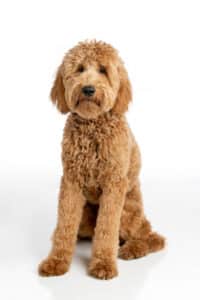
The Curly Coat Doodle is a unique and beautiful breed of Doodle, with a soft and luxurious coat of fur. This breed is known for its curly coat, which can range from wavy to tightly curled and comes in a variety of colors. The most popular colors of the Curly Coat Doodle are apricot, white, black, red, and silver. Not only is the Curly Coat Doodle's fur stunning to look at, but it is also hypoallergenic and sheds very little, making them a great option for those with allergies.
The Curly Coat Doodle requires regular brushing and grooming to keep their fur looking its best. This breed can range in size from small to large and is known to be friendly and intelligent. This makes them a great companion for families and individuals alike.
If you are looking for a unique and beautiful companion, then the Curly Coat Doodle may be the perfect fit for you. With its soft and luxurious coat of fur, hypoallergenic qualities, friendly personality, and intelligence, the Curly Coat Doodle is a breed you won’t want to miss out on.
The Curly Coat Doodle is a unique breed of dog that is characterized by its curly and wavy coat. With a variety of coat colors ranging from white to black and everything in between, this Doodle type is great for people who don’t want to deal with the hassle of daily grooming and brushing. Curly Coats are also water-resistant, making them a great choice for outdoor activities such as swimming. Because the coat is water-resistant, Curly Coats are great for people who live in warm climates, as their coat will keep them cool in the summer. In addition, Curly Coats come in both long and short varieties, giving owners the option to choose the coat length that best suits their lifestyle. With so many options to choose from, the Curly Coat Doodle is an ideal companion for any family.
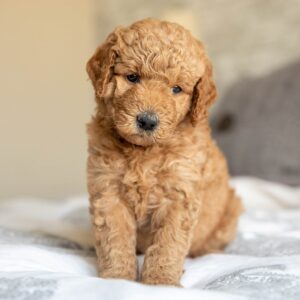
The Wavy Coat Doodle is an incredibly unique breed of Doodle that is sure to turn heads wherever it goes. With its signature wavy, shaggy fur coat, the Wavy Coat Doodle is available in a variety of colors, including cream, apricot, red, black, and brown. Not only is this breed an eye-catching beauty, but it's also highly intelligent and easy to train, making it a great family pet.
Doodles are beloved for their unique coats, which come in a variety of textures and colors. One of the most popular coat types is the wavy coat, which is characterized by its unique, wavy texture and fluffy appearance. This type of coat is very low-maintenance, as it doesn't require frequent brushing or grooming. Additionally, wavy coats are water-resistant, making them suitable for outdoor activities.
When it comes to color, doodles with wavy coats come in a wide range of colors, including black, chocolate, apricot, silver, blue, and more. This type of coat is also a great choice for allergy-sufferers, as it doesn't shed much. Furthermore, wavy coats are very durable and require minimal grooming, making them an ideal choice for busy pet owners. Whether you're looking for a low-maintenance, allergy-friendly coat or simply want a unique look for your doodle, wavy coats are sure to provide the perfect solution.
The Wavy Coat Doodle is a low-shedding breed that is also hypoallergenic, making it a great choice for people with allergies. Additionally, the Wavy Coat Doodle is an affectionate and social breed that loves to be around people. This type of Doodle is an active breed that loves to run and play, making it a great choice for active families. The Wavy Coat Doodle is an ideal companion for anyone looking for a loyal and loving pet.
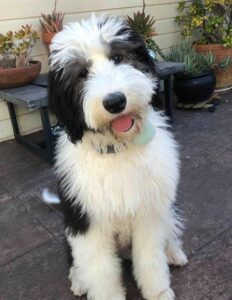
Doodles are known for their unique coats and colors, and the most common type is the straight coat. Straight coats come in a variety of colors, including black, white, cream, and gold. What sets this type of coat apart from other varieties is its short and dense texture, which helps to protect the doodle from the elements. Straight coats are also known for being easy to groom and keep clean, making them a great choice for those who want a low-maintenance coat.
Straight coated doodles are a popular choice for many dog owners due to their low-shedding and easy to maintain coats. This type of coat is short and smooth, and lays close to the body. Straight coated doodles come in a variety of colors and patterns including parti-colored, solid, abstract, and merle. Since the coat is short and smooth, brushing and combing is generally not necessary. Occasional baths and brushing will help keep the coat looking its best.
The benefits of having a straight coated doodle are numerous. They are easy to care for and require little maintenance. Additionally, they tend to be quite hypoallergenic, making them a great option for those with allergies. If you’re looking for a low-maintenance and hypoallergenic dog, a straight coated doodle may be the perfect choice for you.
For those with an active lifestyle, the straight coat is ideal because it won't get in the way of any activities. Plus, it's a great choice for those who are looking for a classic look that won't go out of style. With so many color and coat options available, there's no doubt that the straight coat is a great choice for doodles.
Doodles are a beloved breed for many pet parents, due to their low to non-shedding coat and friendly disposition. doodle coats can range from a short, smooth coat to a long, thick, wavy or curly coat, depending on the breed of the parent dog. The color of a doodle’s coat can vary greatly, and can come in a variety of colors such as white, cream, gold, apricot, black, silver, and red. doodles can also have a variety of colors and patterns, including parti (two-tone), merle, brindle, sable, solid, phantom, or tuxedo.
Maintaining a doodle’s coat is relatively easy, and can be done by regular brushing and grooming. Keeping the coat clean and tangle-free will help to keep it healthy and looking its best. doodles are known to be very friendly and loving, making them a great choice for pet parents who are looking for an easy-to-care-for pet.
doodles are a popular breed of dog, known for their playful and loving nature. They come in a variety of coat lengths and colors, making them a great pet for any family.
doodle coats can range from short to long. Short coats are usually wavy or slightly curly and can be anywhere from 1-3 inches in length. Long coats are usually more curly and can be anywhere from 4-6 inches in length. doodles with long coats will require more maintenance than those with short coats, as they will need to be brushed and groomed more often. Some doodles may even have a combination of short and long coat lengths.
The coat color of doodles can vary greatly, ranging from black to white, and even combinations of colors. doodles can also have a variety of markings, such as spots, patches, and brindles. No matter what coat type or color of doodle you choose, they are sure to make a great pet for your family.
The doodle is a popular crossbreed of one dog and a poodle. One of the reasons the doodle is so popular is because of their coat type and color. Depending on the parent breeds, doodle coats can come in a variety of types and colors. Here is a look at the different coat types and colors of doodles.
The Fleece Coat doodle has a long, wavy, and silky coat that looks like the coat of an Angora goat. It usually has a low to non-shedding coat. The Wool Coat doodle has a tight curl that looks like a poodle's coat. It usually has a low to non-shedding coat. The Hair Coat doodle has hair that is usually medium in length and wavy or straight. It usually has a low to non-shedding coat. The Shag Coat doodle has a long, wavy, and shaggy coat. It usually has a low to non-shedding coat. The Combination Coat doodle has a coat that is a combination of the above coats. It usually has a low to non-shedding coat.
Doodles are popular and beloved dogs, thanks in part to their striking and unique coat genetics. Every type of Doodle has different coat genetics and characteristics, meaning the coat type and color of doodles can vary from breed to breed. The most common coat types for doodles are wavy, curly, and shaggy, and the coat colors can be anything from solid colors to multi-colored. White, black, gray, cream, gold, and red are some of the most common doodle coat colors.
Not only do the coat genetics of doodles influence their appearance, but they can also influence their overall health. Some doodles may have a higher risk of developing certain health issues due to their coat type and color. Therefore, it is important to research the breed of doodle you are considering adopting to make sure you understand their potential health risks.
Grooming is also important for doodles, depending on the type of coat they have. Wavy and curly doodles may require more frequent brushing and combing than their straight-haired counterparts. If you are considering adopting a doodle, make sure you understand the grooming requirements of the specific breed you are interested in.
No matter the type of coat or color, doodles make great family pets. From their unique coat genetics to their playful personalities, doodles are sure to bring joy and love to any home.
Chocolate labs are a very common and popular dog breed, but do they have more energy than other colors? Let’s explore the ins and outs of Chocolate Labs!
Yes, most chocolate labs have a higher energy level than other colors.
The reason for this is because of the mix of breeds that make up the Labradoodle. Chocolate labs are more energetic than other colors because they have been bred to be active and playful dogs. They love to play in water and will swim for hours if you let them!
However, there are many pet owners that swear by their chocolate labs. They claim that they’re more energetic than other colors and that they need more exercise.
Chocolate labs are great with kids, other pets and other people. They are especially good at playing fetch with you or your children in the park or on the beach when it’s warm outside. If you have a pool in your backyard then this is another place where a chocolate lab will have fun splashing around with its family members all day long!
They also get along well with other dogs so if you live in an apartment building where there aren’t any outdoor spaces available then this won’t be an issue since most apartments allow pets as long as they don’t cause any problems for neighbors (eagerly barking at strangers who walk past).
Chocolate Labs can be fun but can also be very high energy. They need a lot of exercise and attention, so if you have the time and patience to give them what they need, then a chocolate lab might be a good fit for your family!
Chocolate Labs are great for kids because they are easy to train and love spending time with their families.
If you’re looking for a dog who will keep up with your energetic lifestyle, a chocolate lab is the perfect choice. They love to play and run, so they’ll be happy to go on runs with you or chase balls around in the yard. Chocolate Labs also have a high energy level which means they need plenty of exercise.
Chocolate labs are great for people who have lots of time outside because they love being outdoors! If this sounds like something that would work well with your lifestyle, then consider adopting a chocolate lab!
If you want to go running every day and have a dog that will keep up with you, then a chocolate lab is the right breed for you. If not, there are plenty of other breeds out there that may be better suited for your needs.
Harmful Algae Blooms (HABs) are a serious environmental problem. There are many types of HABs, but they all have some things in common: they can make water unsafe for swimming or drinking; they may cause illness in people and animals; and there are things we can do to protect ourselves from them.
Algae are a group of photosynthetic organisms. They’re found in nearly every environment, including lakes and oceans. Algae are actually plants (not animals), but like other plants they need sunlight to grow and reproduce.
Some algae can be harmful to humans and animals if they get into drinking water supplies. The most common type of harmful algae bloom is caused by cyanobacteria (also called blue-green algae), which produces toxins that can kill pets who drink contaminated water or lick their fur after swimming in toxic waters–and even cause sickness in humans! Some species have been known to produce neurotoxins that affect the nervous system; these blooms may cause neurological symptoms such as vomiting or diarrhea in dogs exposed through ingestion of contaminated food sources such as grasses growing along shorelines where blooms occur
Harmful Algae Blooms (HABs) are a growing environmental problem, and they can be caused by pollution or natural conditions. HABs can cause health problems in people and animals, and there are different types of HABs that affect the environment differently.
You should be aware of the signs of an HAB so you know what to look for if one is happening near you.
Some HABs may cause illness in people and animals.
Harmful Algae Bloom (HAB) is a term used to describe an increase in the population of algae over a short period of time. When the algae die, they release toxins that can cause gastrointestinal illness, respiratory illness and skin irritation. People who drink contaminated water may experience diarrhea or vomiting; those who breathe polluted air can experience eye irritation or respiratory problems such as coughing or wheezing; swimmers who come into contact with toxic blooms may suffer from skin rashes or stinging eyes. Pets can also be affected by harmful algal blooms, particularly dogs that swim in lakes during summer months when cyanobacteria are more prevalent in water bodies across North America
To protect yourself and your pets from HABs, it’s best to avoid swimming in lakes and rivers. If you do swim in lakes or rivers, make sure to wash off after swimming. If you think your pet has come into contact with HABs-contaminated water, contact a veterinarian immediately.
Also remember not to eat any fish from areas where HABs have been reported–and don’t let your dog drink the water either!
When people think of harmful algae blooms (HABs), they may think of the red tide that makes its way up the Gulf Coast every year. But HABs are a serious environmental problem all over the world, and they can cause illness in both humans and animals. While there’s no way to completely eliminate your risk of exposure to HABs, there are some things you can do to protect yourself and your pets from these potentially dangerous blooms.
Here are some facts about dogs and harmful algae blooms:
We hope that you now have a better understanding of harmful algae blooms and dogs. We know it can be scary to think about these types of environmental issues, but the more we know about them and what they mean for our pets, the better prepared we’ll be to protect ourselves and our families from them.
Labradoodles, or “labradors crossed with poodles,” are a designer dog that has been around since the 1990s. Although they’re not as popular as they were years ago (probably because they’re all over Instagram), they’re still a great choice for families and individuals alike. If you’re considering adopting one of these pooches, here are seven reasons why owning a Labradoodle is awesome:
Labradoodles are smart and easy to train. They are very loyal and like to please their owners, so it’s not difficult for them to learn new tricks or commands. Labs also love learning new things, which makes them great candidates for agility training, tracking and hunting classes!
If you want your dog to be able to pull weight in a sled or cart (which they can), then this breed might not be right for you: they don’t have the strength or endurance of huskies or malamutes. But if all you need from your furry friend is some help opening doors? You’re good on that front too – Labradoodles weigh between 50-70 pounds when fully grown!
Labradoodles are affectionate, loyal and playful. They make excellent companions for children, seniors and other dogs.
They have a laid-back personality that makes them easy to train. This breed can be used for agility, obedience or other sports like flyball or freestyle dancing in which they excel because of their high energy levels!
Labradoodles are a good balance of energy, but not too much. They have the same amount of energy that their owners have, or maybe even less than their owners. If you’re looking for a dog that requires lots of exercise, this isn’t the breed for you. However, if your daily routine involves running errands around town and taking short walks around the block with your pup in tow–or even just sitting on the sofa watching TV together–then this could be an excellent fit!
Labradoodles also tend to get along well with other dogs in their families and neighborhoods (if they live in an apartment). This makes sense because these pups were bred from two breeds known for being good with people: Labradors and Poodles! So if there’s another canine companion already living at home when adopting a Labradoodle puppy into your life (or vice versa), then expect both pets will get along great together once they grow up together as best friends.”
Labs are great swimmers and love to play in water. They’re also good with boats, so if you go boating or fishing with your family, your Labradoodle will be right there with you! You can even take them for a swim at the beach or lake if it’s warm enough outside. If not, they’ll still enjoy playing in sprinklers and showers (just make sure the latter doesn’t get too hot).
Labradoodles are hypoallergenic and have a low-maintenance coat. This means that you will spend less time brushing and cleaning up after your dog, which is always a good thing!
If you’re looking for a dog that will shed less than other breeds, then look no further than the Labradoodle.
If you’re looking for a dog that will get along well with the kids in your family, then a Labradoodle could be just what you need. Labradoodles are known for their gentle nature and tolerance of children and other animals in the family. They are playful and energetic but not too much; they won’t try to knock over toddlers or chase cats around the house!
They are not aggressive toward people or other animals, so they make excellent watchdogs as well as companions for kids’ playtime activities (think: tag). Because they don’t bark much and aren’t territorial about their territory (your home), these dogs will make great pets even if you live in an apartment building where barking would be considered rude behavior by neighbors!
Labradoodles are an awesome family dog. They are very tolerant of children and other animals in the family, so they’re great for people with kids or other pets. They love water, too! You can take them swimming or boating and they will just have fun splashing around.
Labradoodles are also smart and trainable, which makes them ideal for those who want to teach their dogs tricks or do agility training together (which is a lot of fun). And finally, Labradoodles have a good balance between energy levels–they don’t need as much exercise as some breeds but still require regular walks and playtime outdoors so that they don’t get bored at home all day long!
We love our Labradoodle, and we know you will too. These dogs are great companions who can do everything from fetching your slippers to helping you with homework. They have a sweet personality that everyone will fall in love with!
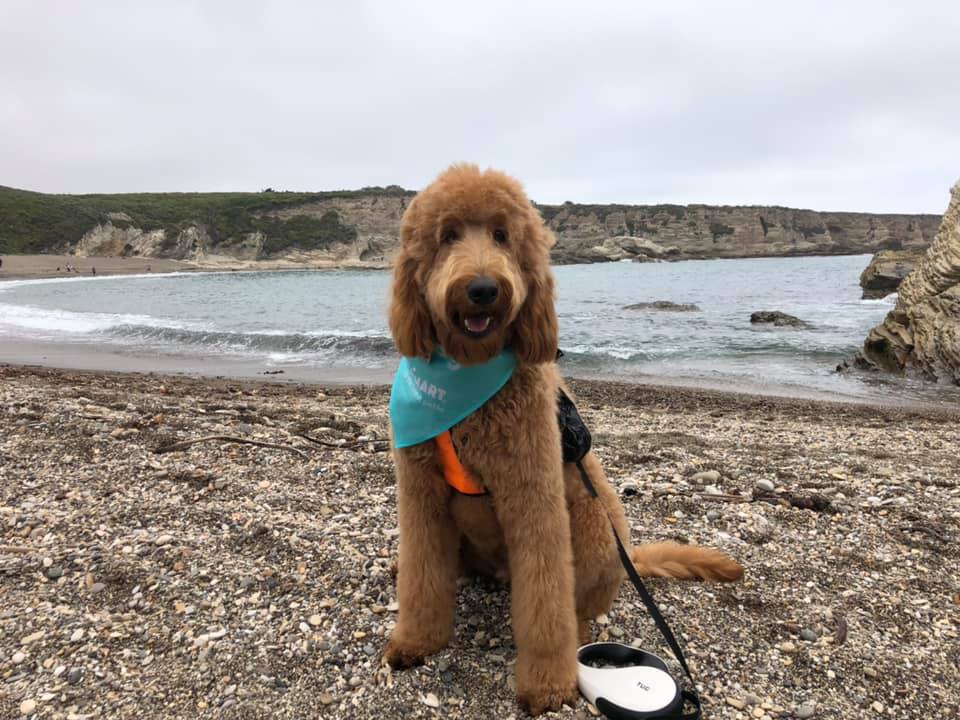
Hypoallergenic Doodles – Everything You Need to Know
If you love dogs but need to keep your distance because of allergies, a Doodle might be a great choice. This article will tell you everything you need to know about what it means for a dog breed to be hypoallergenic and why the Doodle breeds are worth considering if you’re looking for a loyal companion, but without the sneezing and itchy eyes.
The doodle breeds are good-looking, and often cute dogs that are regularly chosen for their hypoallergenic qualities. Every doodle shares a common ancestor in the poodle, a dog breed with a curly coat that produces very little fallout, at least until it’s time for brushing.
Curly coats can hold on to shed fur and dander, making Doodles a great choice for people sensitive to pet hair and dander.
There are different types of Doodles, depending on the dog breed that is crossed with a poodle. The earliest example of a Doodle is thought to have been a “Cockapoo,” a cross between a Cocker Spaniel and a Poodle born in the 1940s.
The Doodle’s popularity has exploded since then, as breeders quickly combined other dog breeds in their attempts to bring out the best qualities of both parents.
Popular Doodle Dog Breeds
Here are just a few of the popular Doodles you can consider having as your next best friend.
Goldendoodle
Goldendoodles from reputable breeders are a very healthy breed. They are medium-sized, low-shedding dogs with thick, curly coats and lovely temperaments.
Labradoodle
The Labradoodle is cool, calm, and collected, as well as highly intelligent and extremely loyal. If you love to explore the world around you, the Labradoodle will not like to be left behind. Because they shed very little, they are less likely to cause allergic reactions.
Schnoodle
The Schnoodle is small and cute. They have very few equals when it comes to being hypoallergenic because neither parent sheds. They are an intelligent but serious breed, so they need a person with a strong personality to handle them.
Sheepadoodle
Sheepadoodles are a fun-loving, mild-mannered breed of dog always looking for fun. They possess a low-shedding coat that requires daily brushing and regular visits to the salon to manage.
Cockapoo
Loving and affectionate, the Cockapoo gets its adorable nature from the friendly and loyal Cocker Spaniel, and its high intelligence from the Poodle. These low-shedding dogs thrive on companionship and do not like to be left alone for long.
Cockapoos are extremely popular, and so they are overbred by opportunistic breeders. Always do your due diligence and only deal with a reputable dealer.
The Doodle breeds listed above are just a small selection of what’s available. There are many more to choose from, so be sure to call to find out more.
Are Doodle Breeds Really Hypoallergenic?
The term hypoallergenic doodle is not the same as “non-allergenic,” even though it is often mistaken for meaning the same thing. Saying a dog is hypoallergenic is not a guarantee that a person will not have an allergy to a Doodle. It simply means a reaction is much less likely because doodle breeds do not shed as much as other dogs. The term hypoallergenic doodle is really a misnomer.
There are only 12 truly hypoallergenic breeds according to the AKC.
Shedding is much less in Doodles when compared to many other breeds, but it can vary between different types of Doodles. As such, you will need to carefully consider which Doodle is right for you relative to how sensitive your allergies are to dogs.
Also keep in mind that all Doodles produce dander, which is an allergen for people who are allergic to dogs. There are also those who will have allergic reactions to a dog’s drool or urine proteins, which usually means a dog is not in your future. However, if your dog allergy is relatively mild, a Doodle could be a good match for your home.
People allergic to pets with fur often associate their allergies with the fur itself. However, an allergy is not triggered by an animal’s fur but by the proteins found in their pet dander (dead skin cells).
The dander, which is the true cause of your allergic reaction, gets trapped in the fur. The more fur a dog sheds, the more exposure you will have to potential allergens.
It’s for this reason that dog breeds that experience minimal shedding are considered hypoallergenic. All dogs shed dead skin cells, which means there are no truly hypoallergenic dogs. However, some come pretty close, especially in the Doodle variety.
How to Choose a Hypoallergenic Doodle
Due to the wide variety of breeds getting crossed with poodles to create all manner of Doodles, knowing the genetics of a Doodle breed will help you make the best choice.
A first-generation Doodle is a purebred, and these typically have more open coats than Doodles with woolly coats more like a Poodle’s.
Open-coated Doodles shed more fur than their woollier counterparts. The most hypoallergenic Doodle breeds are those that are sired by crossing a first-generation Doodle with a purebred Poodle.
Another great way to find your perfect Doodle is to spend some time with the type that interests you the most. This way, you can gauge your reaction to the animal before you decide to take one home.
How Much Do Doodle’s Shed?
While Doodle breeds are popular for their minimal shedding, that doesn’t mean there won’t be any at all. Curly-coated Doodles can create the illusion of no shedding, but that’s because their coat is good at trapping the dropped fur and dander.
The trapped material will come out during washing and brushing, so you need to be mindful of that when selecting a suitable Doodle breed for your allergies.
How Often Do I Have to Groom My Pet Doodle?
Doodles shed more the longer they go without being brushed. Regular brushing is an excellent way to control the volume of loose fur and dander you are exposed to between grooming sessions. Keeping the fur short can also help control the amount of hair a Doodle drops.
Many Doodle owners reduce their exposure to allergens by getting their pets professionally groomed rather than doing it themselves. We recommend having your Doodle professionally groomed at least three or four times a year to ensure they can enjoy a healthy, trouble-free coat.
How often you need to groom your Doodle will depend on how long their fur is. Longer coats require more care, so keeping them short can reduce the frequency of brushing.
Certain situations can cause a Doodle to shed more than usual. Some medications can exacerbate shedding. Your pet may also have allergies of their own that cause them to lose more of their coat than usual. Like people, Doodles can be allergic to some of the ingredients in their food, so watch your pet closely after any dietary changes.
While hypoallergenic does not mean what many people think it means, there are still a lot of advantages to having a low-shedding dog as your companion. Doodles are available in a wide variety of sizes, shapes, and temperaments. If your allergies have stopped you from getting a dog in the past, a Doodle could be a great solution. Call today for professional advice about how to get a Doodle into your life.
